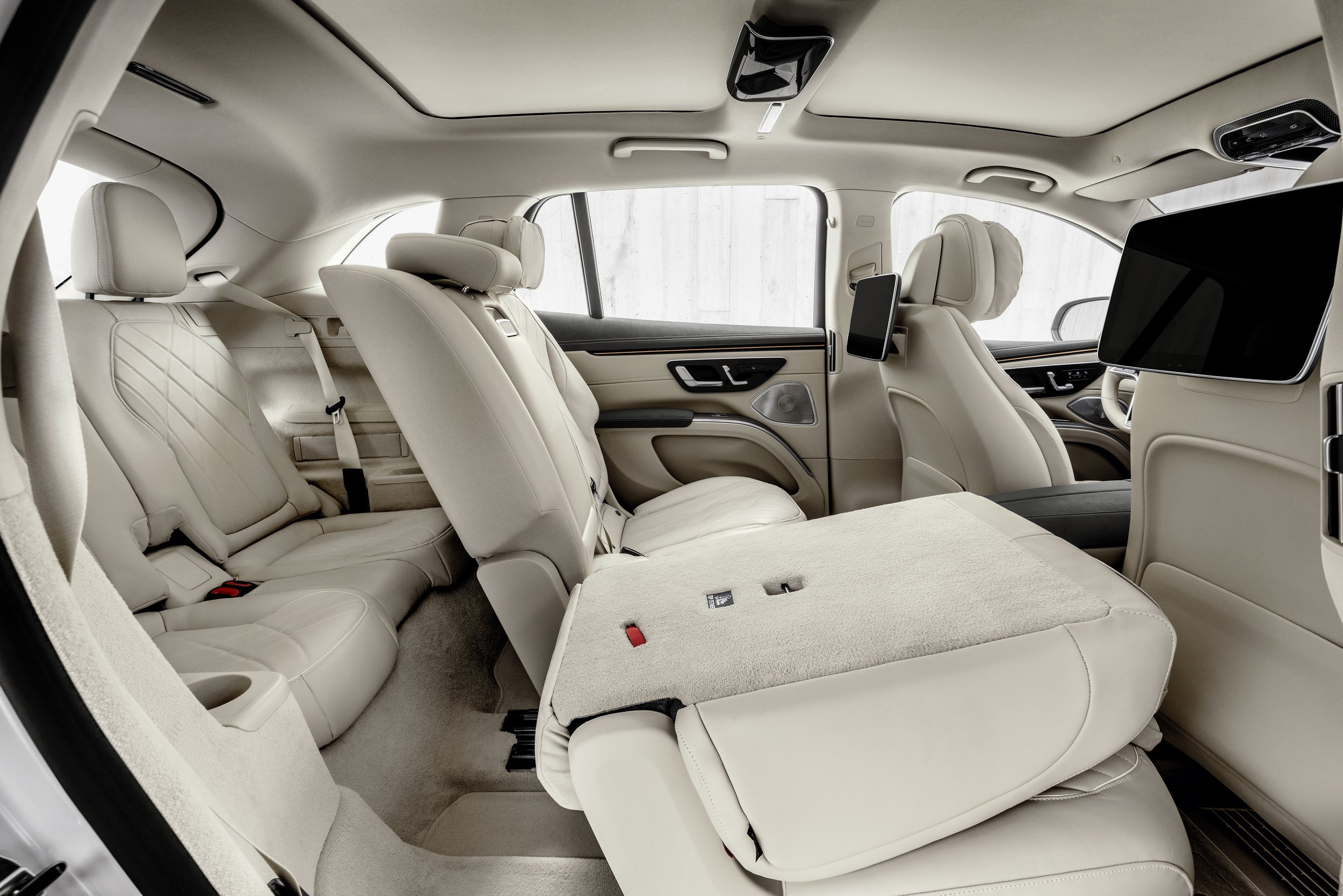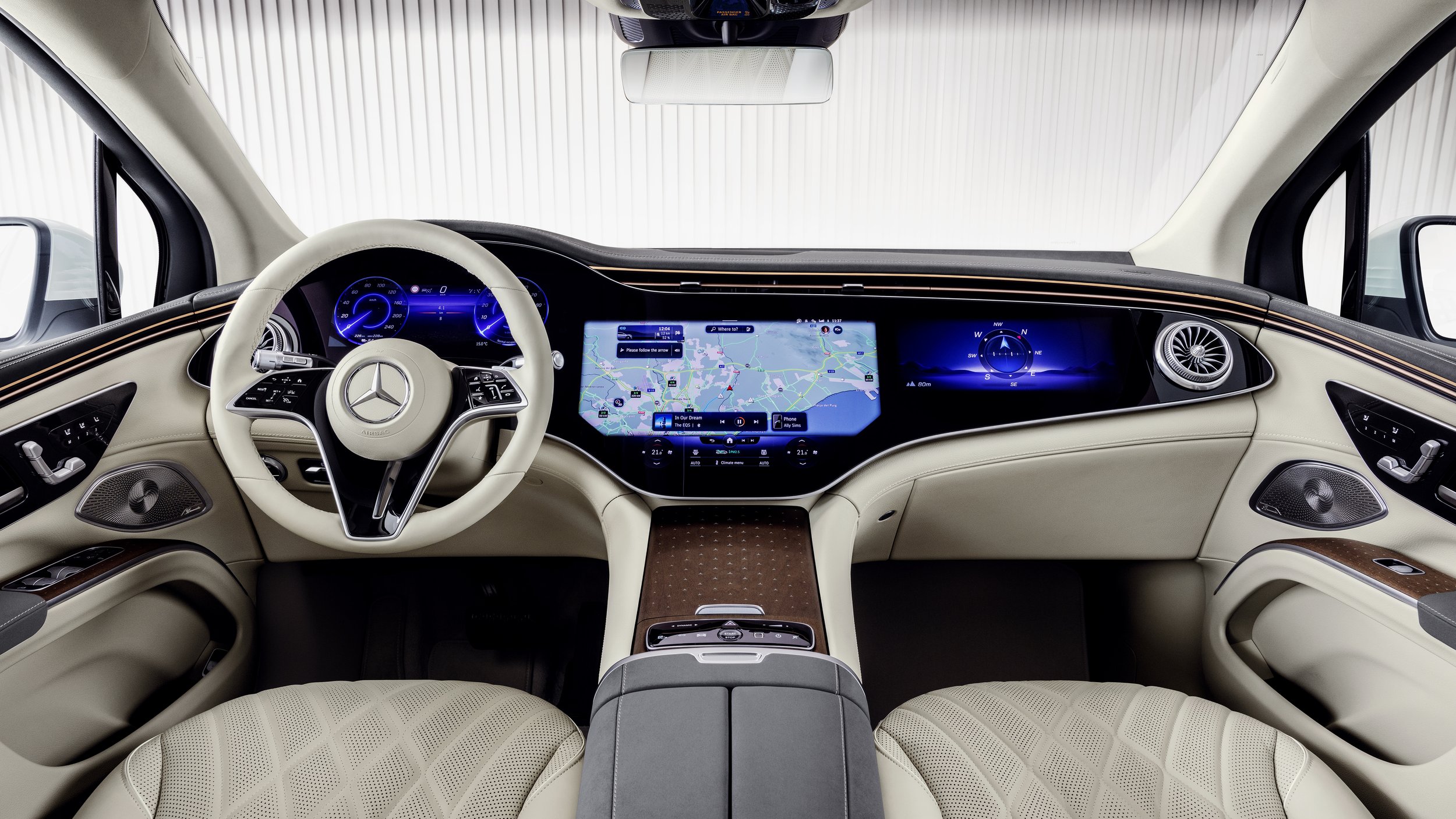EQS unveiled, confirmed for NZ
/Expect to see the electric equivalent of the juggernaut GLS by mid-2023
THE electric alternate to Mercedes’ largest, most expensive and most extravagant off-seal capable model has unveiled internationally with local availability before June of 2023 signalled.
Local market pricing potentials for the EQS SUV has yet to be discussed, but usual form for battery-dedicated product from Mercedes is to carry a significant premium over fossil-fuelled equivalents in this instance, that’s the GLS - which raises the prospect of even the least cheapest not leaving change from $200,000. The cheapest GLS, the 400d that runs a 3.0-litre V6 turbodiesel, is just under $172,000.
And peak? The sky is still the limit. As luxurious though the EQS SUV is, an even plusher variant has yet to come.
Mercedes says that ultra-luxury Mercedes-Maybach EQS, derived from a concept that made its debut at last year's Munich motor show, is going to be kept under wraps until next year. But just to get your bearings, the current petrol equivalent, the Maybach GLS 600 4MATIC, carries a $239,300 sticker.
Also yet to be seen is the AMG-fettled EQS. That car is definitely coming and might be presumed to have a ready audience, as the AMG GLS 63 – which like the Maybach runs a 4.0-litre twin turbo V8- stands as the most popular current GLS. It costs $270k.
It’s not clear if all the GLS models will remain in circulation once the EQS SUV equivalents have settled in, but the prospect would seem high.
After all, the EQC currently sits as an alternate to the GLC and GLE, the EQB is expected to sell alongside the GLB and the new EQS luxury sedan, cited for early 2023 delivery now, is unlikely to bump the S-Class limo it equates to in size and specification.
The EQS SUV and sedan are a lot closer related than the S-Class and GLS. The electric-dedicated products sit on a common Electric Vehicle Architecture and use the same massive 107.8kWh battery pack. They have an identical 3210mm wheelbase, 75mm longer than the GLS, which promises a massive interior for the SUV. With the model, seven seats are actually an option, but one likely to become standard for NZ.
EQS carries the same design language as other Mercedes EQ electric models; so, lots of smooth, flowing surfaces and absence of sharp edges all in the aid of aerodynamic efficiency. Wind-cheating explains the blanked-off grille and LED headlights forming one unit with a connecting light bar across the front.
Unlike the EQS and EQE models, the doors aren't frameless units but do feature similar flush handles. At the rear, there's another light bar, this time spanning the width of the vehicle and wrapping around to the sides.
The shaping pays off on energy efficiency. Mercedes cites consumption of between 23 and 18.6kWh/100km; the first figure is akin to what Audi’s large e-trons tend to deliver while the lowest is in the same realm as a rear-drive Hyundai Ioniq 5.
Range? The king is the entry 450 plus, a single motor model in which 265kW/400Nm is sent to the rear wheels. Benz cites potential for it to achieve 660km between charges.
The next choice 450 4MATIC - as the name suggests, an all-wheel drive dual-motor version of the same model, with identical power but more torque (800Nm) - reduces to 612km. That’s also the case with the top-line 400kW/858Nm 580 plus 4MATIC, even though it ekes the most power out of its battery and twin motors with a 0-100kmh time of 4.5 seconds.
All versions feature 200kW DC rapid charging capability meaning top-ups from 10-80 percent take around 31 minutes.
As with the EQS and GLS, the EQS has AirMatic air suspension set-up with adaptive dampers, the settings on which can be toggled depending on the situation. In Offroad mode, the ride height can be raised by up to 25mm at speeds below 80kmh, while at 110kmh and above Comfort mode hauls the suspension down by 10mm, Sport mode dropping it by 15mm to reduce drag.
As standard, the EQS SUV features a 12.3-inch digital instrument cluster and a 12.8-inch portrait-aspect infotainment screen. Optional, however (and standard on the 580 plus) is the Mercedes Hyperscreen system which melds the instrument cluster, infotainment screen and another 12.3-inch passenger screen into one dashboard.
Want more screen still? Ticking for the Entertainment Plus pack adds a pair of 11.6-inch monitors to the rear of the front seats for those sitting in the second row.
In seven-seater form, space behind the rear seats is a mere 195 litres. With the rearmost seats folded away, there's up to 880 litres of luggage space.





















